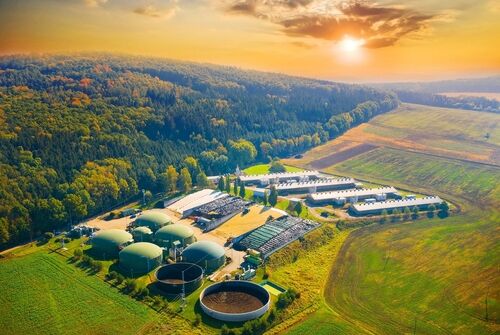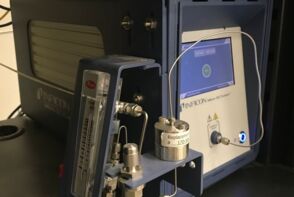Analyzing Biogas Components in Landfills and Digesters
with Micro GC Fusion®

Climate change is accelerating the need for renewable energy sources such as biogas. Biogas is composed of gases produced by the anaerobic digestion of organic compounds which can happen as a natural byproduct of decomposition, as seen in landfills, or with the use of controlled anaerobic digesters used to break down biomass sources, such as animal or industrial waste. The biogas from those materials can be used for electricity, transportation, and pipeline gas due to the high energy content of methane, typically 50-75%. Monitoring the composition of biogas is a critical part of keeping processes stable and efficient.
Carbon dioxide (CO2) and sulfurs such as hydrogen sulfide (H2S) in the gas can be treated to increase the overall percentage of methane and the calorific value. This upgraded gas, also known as Renewable Natural Gas (RNG or biomethane) can be utilized in local natural gas pipelines.
Analytical instruments, such as micro gas chromatographs (GC), monitor and track important changes in gas composition. They provide a fast and reliable gas composition analysis for common biogas components from ppm up to high percent levels.
Landfill Tuning
The United States Environmental Protection Agency (EPA) encourages effective use of biogas recovered from landfills for electricity generation, heating local communities, and upgrading to RNG for introduction into natural gas pipelines or for vehicle consumption.
The efficiency of anaerobic digestion of organic waste in a landfill is correlated to the oxygen level. To maintain high quality gas output, operators can “tune” the landfill by regulating the air intake at the wellheads and by mitigating leaks in pipelines. An important indication of how a wellhead should be tuned is provided by the gas composition of oxygen, nitrogen, methane, and carbon dioxide measured with instruments such as gas chromatographs. In some cases, hydrogen present in the wellhead gas can also be analyzed.
Measuring Harmful Components
Depending on the source, biogas can contain harmful compounds and pollutants such as carbon monoxide (CO) and hydrogen sulfide (H2S). H2S can have detrimental effects on equipment, processes, and people in amounts as low as 10 ppm. In some landfills, there can be more than 3% H2S. Micro GC Fusion is capable of running high levels of H2S while still providing accurate analysis of other key compounds.
EPA regulations also require the monitoring of CO in select high temperature wells. Micro GC Fusion analyzes 100 ppm CO as required by 40 C.F.R. § 63.1961(a)(5).


Benefits of Micro GC Technology
Micro GC technology offers fast analysis in a transportable chassis. Micro GCs can be taken into the field for on-site gas analyses, such as those conducted on landfills, and has the benefit of maintaining sample integrity and providing results quickly. Alternately, the Micro GC can be set up in a fixed location and the small footprint is optimal when there is not much space available.
Each Micro GC contains one to four modules – each of which has independent method parameters that can be optimized for speed and peak separation. Temperature programming the columns ensures that heavy components fully elute from the columns, keeping them clean. Within minutes, a full analysis of biogas can be achieved.
Want to Learn More About our Products and Applications?
Our newsletter offers regular updates on our latest products, applications, upcoming events, and other interesting news.